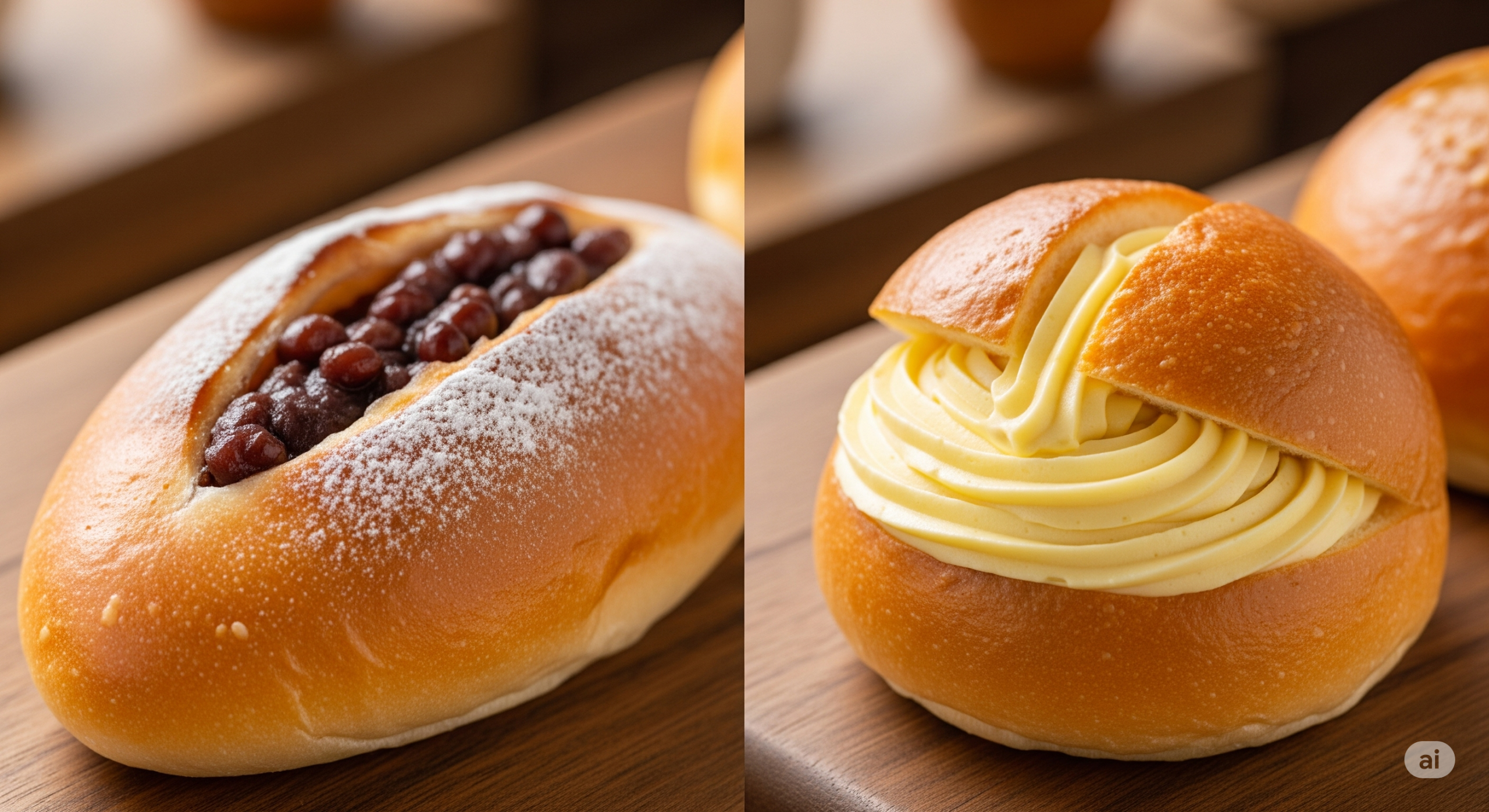1. Nutritional Content of Snack Breads
The breads we commonly enjoy as snacks, such as red bean bread, cream bread, or soboro bread, are not made of just bread (carbohydrates). In addition to the refined flour and sugar used to make the dough, a tremendous amount of extra sugar is used to make the fillings, like red bean paste or custard cream.
2. Carbohydrate Content Comparison
– One typical red bean bread (danpatppang) (approx. 100g):
– Carbohydrates: approx. 50-60g
– Of which, sugars: approx. 20-30g
– One bowl of rice (210g):
– Carbohydrates: approx. 65-70g
– Half a bowl of rice (approx. 105g):
– Carbohydrates: approx. 33-35g
Comparing these figures, you can see that a single red bean bread contains an amount of carbohydrates that is well over half a bowl of rice, and almost as much as a full bowl. In particular, a significant portion of these carbohydrates is made up of very fast-absorbing ‘simple sugars,’ which cause a very sharp rise in blood sugar.
3. The ‘Snack’ Trap
Many people think of these breads as a light ‘snack’ and often eat them in between meals. However, from a nutritional standpoint, eating one of these snack breads can be not much different from eating a bowl of rice mixed with sugar. This is equivalent to consuming an additional high-carb bomb outside of your meals, which is very detrimental to blood sugar control.
Summary: A single, small-looking snack bread is packed with more than half a bowl of rice’s worth of carbohydrates and sugar. Eating it casually as a light snack can lead to an unexpected blood sugar spike, so consumption should be avoided as much as possible.


Leave a Reply